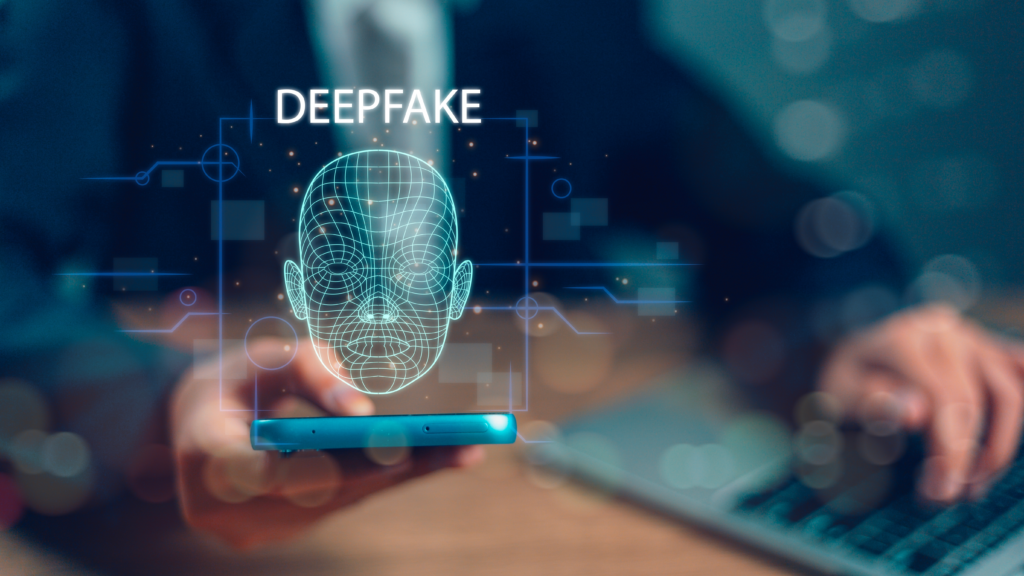
Artificial Intelligence has revolutionized how we create and consume content. From realistic images and synthetic voices to AI-generated news and social media content, the line between real and artificial is rapidly blurring. While this technology offers enormous creative and commercial potential, it also introduces a darker, more concerning phenomenon: the spread of misinformation and deepfakes.
In this article, we explore:
- What deepfakes and AI-generated misinformation are
- How they spread
- Real-world examples of their impact
- The ethical and social implications
- Strategies for detection and prevention
What Are Deepfakes and AI-Generated Misinformation?
Deepfakes
Deepfakes are hyper-realistic media—typically videos or audio—generated using AI techniques like deep learning. They superimpose a person’s likeness onto another’s body or alter their expressions and speech to make it seem as though they did or said something they never did.
Popular methods include:
- Face swapping (using GANs – Generative Adversarial Networks)
- Voice cloning
- Lip-syncing manipulation
AI-Generated Misinformation
This refers to false or misleading content created using language models, image generators, or audio synthesis tools. It includes:
- Fake news articles
- Manipulated images (e.g., AI-generated disaster photos)
- Fabricated social media posts
- AI-written propaganda or conspiracy theories
Together, these technologies enable the production of believable fake content at scale, speed, and low cost.
How Does AI Amplify Misinformation?
AI has become a force multiplier for misinformation for several key reasons:
1. Realism
Generative models like DALL·E, Midjourney, and Sora can produce highly realistic visuals and video clips that mimic authentic sources. Many deepfakes are indistinguishable from real footage to the human eye.
2. Scale and Speed
With generative AI, malicious actors can create and distribute thousands of fake posts, images, or videos in a matter of minutes—far faster than traditional content creation methods.
3. Targeted Manipulation
AI enables personalized disinformation. Language models can tailor fake messages to specific demographics, languages, or political ideologies.
4. Anonymity
AI-generated voices and avatars can impersonate real people online, making it difficult to trace the origin of false information.
Real-World Examples of Deepfake and AI Misinformation
1. Political Disinformation
Deepfakes of political leaders giving false speeches have emerged during critical election periods. In 2024, a deepfake of US President Joe Biden supposedly discouraging voting by mail circulated on social media, triggering widespread confusion before being debunked.
2. Stock Market Manipulation
Fake news generated by AI can sway public opinion and stock prices. For example, in May 2023, a fabricated image of an explosion near the Pentagon caused a brief dip in the stock market before it was revealed to be AI-generated.
3. Social Engineering and Scams
Cybercriminals are now using AI-generated voices to impersonate executives or family members. In one case, a UK energy company was defrauded of $243,000 after a scammer used voice cloning software to imitate a CEO’s voice on a phone call.
4. Propaganda and Extremism
AI models have been used to mass-produce ideologically driven content, including hate speech, conspiracy theories, and doctored media meant to polarize or radicalize individuals.
Why Are Deepfakes So Convincing?
The core technology behind deepfakes—GANs (Generative Adversarial Networks)—pits two neural networks against each other: one generates content, while the other critiques it. Through thousands of iterations, the output becomes highly realistic.
In addition:
- Voice cloning tools mimic pitch, tone, and speech patterns.
- Video synthesis replicates facial expressions and body language.
- Language models generate contextually appropriate, grammatically perfect text that mimics a particular writing style.
The result is content that looks, sounds, and reads like it came from a real person or source.
The Consequences of AI-Driven Misinformation
The impact of deepfakes and AI-generated misinformation is profound, cutting across various domains:
Media and Journalism
Fake content erodes public trust in journalism. When viewers can’t distinguish fact from fiction, credible reporting suffers.
Democracy
Manipulated videos and fake news stories can influence elections, discredit political candidates, or suppress voter turnout.
Corporate Reputation
Deepfakes can damage brands or individuals by creating false associations or scandals.
Psychological Harm
Victims of deepfake pornography (a growing issue) suffer from reputational and emotional damage, often without recourse.
Legal and Security Threats
AI impersonation threatens national security, facilitates financial fraud, and complicates legal proceedings where video/audio is used as evidence.
Tools and Techniques for Detecting Deepfakes
Detection is difficult—but not impossible. Researchers and tech companies are working on countermeasures:
Detection Algorithms
- Deepfake detection models analyze inconsistencies in facial movements, blinking patterns, or lighting anomalies.
- Tools like Microsoft’s Video Authenticator or Deepware Scanner help identify altered videos.
Digital Watermarking
Some AI platforms embed watermarks or metadata tags to signal AI-generated content. OpenAI and Google are exploring these measures.
Blockchain for Provenance
Projects like Content Authenticity Initiative (by Adobe and partners) use cryptographic hashes and blockchain to verify the origin and integrity of media files.
Media Literacy Campaigns
Educating the public about AI-generated content is key. Awareness helps users develop critical thinking skills to evaluate information sources.
Responsible Use of Generative AI
While the threats are real, generative AI is not inherently malicious. The responsibility lies in:
- How it’s developed
- Who gets access
- What safeguards are in place
Companies like OpenAI, Meta, and Adobe are implementing policies to:
- Limit harmful usage through content filters
- Require disclosure when content is AI-generated
- Encourage reporting and flagging systems
Meanwhile, platforms like TikTok and YouTube now label synthetic media and remove harmful deepfakes under new content policies.
AI is a powerful creative force, but when wielded irresponsibly, it becomes a tool for deception and harm. As deepfakes and AI-generated misinformation become more sophisticated, vigilance, education, and proactive regulation are essential.
By investing in detection tools, responsible AI development, and a well-informed public, we can enjoy the benefits of generative AI without falling victim to its darker applications.
In a world where seeing is no longer believing, digital literacy is our first line of defense.